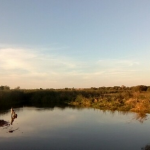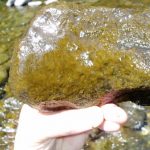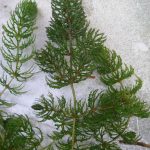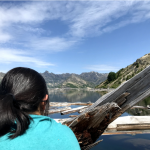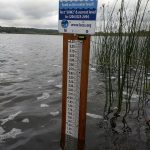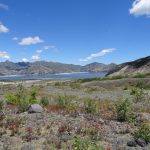Effects of Typha latifolia on Irrigation Practices and Utilitarian Perspective of KwareLake, Nigeria
BY DR IBRAHIM M. MAGAMI,DEPARTMENT OF BIOLOGICAL SCIENCES, UDUS NIGERIA
Sokoto State is located in northwestern Nigeria, endowed with freshwater bodies, of which Kware Lake is the only popular natural lake. The lake is used for daily domestic activities, and washing is common at the shore, despite the fact that irrigation and fishing activities are routine practices around the lake. Lakes receive water through precipitation, by runoff, groundwater, etc. They differ by origin: landslide, volcanic eruption, etc.
Biofilms: diverse, dynamic, and understudied
BY ANGELICA LUCCHETTO AND AVERY SHINNEMAN, UNIVERSITY OF WASHINGTON BOTHELL, SCHOOL OF INTERDISCIPLINARY ARTS AND SCIENCES
“Biofilm” is a loose term describing a complex assemblage of bacteria and other microorganisms that secrete a mucilaginous coating [often extracellular polymeric substances (EPS)] which causes them to stick to each other and to surfaces. Essentially, biofilm is the slimy stuff that makes you slip when you step on a wet rock or log. However, biofilm is so much more than just a nuisance to lake-goers.
Need information on aquatic plants? Consult these sources
BY JENIFER PARSONS, AQUATIC PLANT SPECIALIST. WASHINGTON STATE DEPARTMENT OF ECOLOGY
As many people know, the Washington Department of Ecology’s website used to host a lot of information about aquatic plants, including an identification manual and many pages on aquatic plant management methods. However, the agency redesigned the website, and removed all of that information. This was an unfortunate consequence of trying to streamline the site and make it more user-friendly.
Comparing hands-on research and classroom learning: a student perspective
BY RACHEL LIU, DEPARTMENT OF BIOLOGY, UNIVERSITY OF WASHINGTON
As a 21-year-old college student, I have spent most of my life in classrooms. While classroom learning is important, field work and hands-on research has benefited me enormously. The opportunity I had to work with my great mentors and fellow student researchers provided me with invaluable experience that simply can’t be gained through classroom learning. I had the amazing chance this past summer to participate in some hands-on research on Mt. St. Helens investigating algae in Spirit Lake.
NASA-funded project to study changes in Washington lakes
BY GRANT PARKINS, LOCSS PROJECT CO-COORDINATOR, UNIVERSITY OF NORTH CAROLINA
In September 2018, a team of scientists from the University of Washington and the University of North Carolina began studying lakes in western Washington. The project, called Lake Observations by Citizen Scientists & Satellites (LOCSS), seeks to understand how the volume of water in natural lakes is changing over time. To do this, the LOCSS team measures changes in a lake’s surface area using satellite imagery. In addition, a network of local partners and volunteer citizen scientists provides periodic lake height measurements.
Researchers, Conservationists Raise Alarm About Proposed Road Through Mount St. Helens Pumice Plain
BY ALEX BROWN / ABROWN@CHRONLINE.COM
Thanks to Alex Brown and The Daily Chronicle (Lewis County) for permission to reprint this article, which originally appeared in the Chronicle on January 24, 2019.
The Pumice Plain on Mount St. Helens is one of the most unique places on Earth, a 6 square mile landscape that was buried in ash during the mountain’s 1980 eruption, where almost no trace of human influence remains.
For that reason, it’s proved fertile ground for scientists, where researchers of many disciplines have spent the nearly four decades since the eruption literally watching nature run its course. The formation of streams, the return of plants and animals all are the subject of ongoing studies in this singular environment. Currently, 33 active research studies are taking place on the Pumice Plain.

